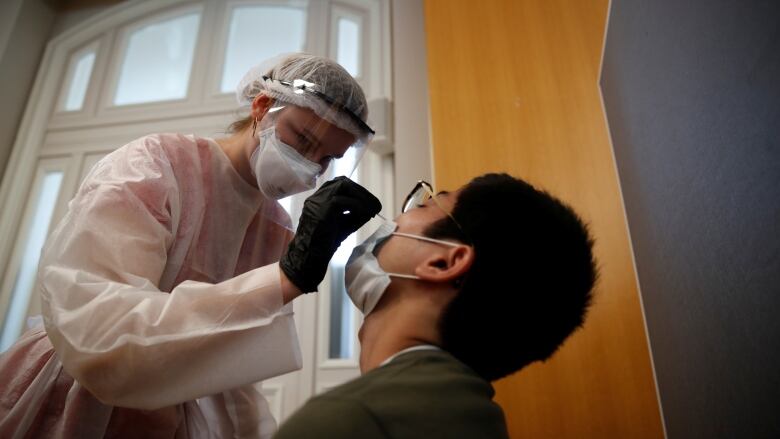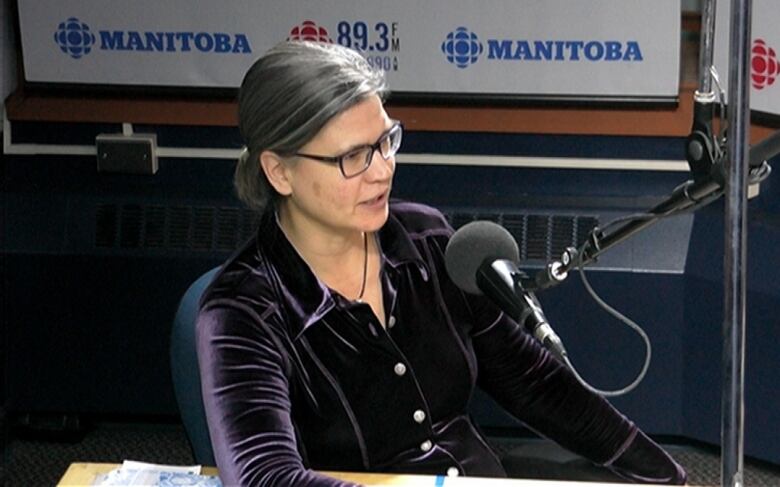COVID-19 testing site for Indigenous people to open in Toronto
Agency partnership aims to address barriers to accessing testing and health care

A COVID-19 testing site is opening up for Indigenous people in Toronto, just in time for the cold and flu season.
"There's not much trust for some Indigenous folks in our health care system because of discriminatory practices or blatant racism," said Steve Teekens, executive director of Na-Me-Res, an emergency shelter and housing organization.
"We have a vacant building here and one of our managers thought this would be a fabulous idea to offer it up as a COVID testing facility for Indigenous people."
Na-Me-Res also offers clients connection to culture, resources for healthy living and integration assistance for men leaving the criminal justice system among other programming.
The idea for the testing site came after the organization's shelter had a client test positive for COVID-19early on in the pandemic, on March 24.
Teekenssaid when he found out that evening that the shelter had a confirmed case of COVID-19,he began reaching out to city health officials for guidance. He saidhis questions fell on deaf ears, as calls went unreturned.
"After a while I gave up on looking for help," said Teekens.
"I figured we've got to get through this ourselves."

The shelter has a nurse on staff who spent time educating the men on proper hand washing.Teekens saidhe also worked on building staff confidence throughkeeping transparent about their active case situation.
Another client had a positive test result, but it turned out to be a false positive.
"We've weathered the storm fairly well until this point but that could all change in a flash," said Teekens.
He said he's happy that there will be a COVID-19 testing site right next to the shelterheading into the winteras it will provide peace of mind for clients and staff alike.
Community-ownedCOVID-19 data
Na-Me-Res has partnered with Well Living House and Seventh Generation Midwives Toronto to make the COVID-19 testing site a reality. Additional partners include Women's College Hospital Centre for Wise Practices In Indigenous Health.
One of the goals of the testing facility is to help eliminate barriers in Indigenous access to COVID-19 support.
Dr. Janet Smylie, director of Well Living House with St. Michael's Hospital,a professor of public healthat the University of Toronto andCanada Research Chair in Advancing Generative Health Services for Indigenous Populations, said some of the barriers for COVID-19 support for First Nations, Inuit and Mtis people in Toronto would be access to testing.

"Most of the test centres are linked to hospitals," Smylie said.
"Hospitals are not the favourite places for most people. For Indigenous people, we know urban hospital emergency rooms are hot spots for anti-Indigenous racism."
The testing site is a component of a larger research initiative called We Count COVID. Two other components are outreach workers and creating adata registryto help close the gaps in Indigenous COVID-19 data. The data from the registry will be owned by Na-Me-Res and Seventh Generation Midwives Toronto.
At the testing centre, once people have received the COVID-19 care they need and any other referrals or supports to meet their immediate health and social needs, patients will be asked if they would like to join the We Count COVID registry.
"We saw in the first wave how there were gaps in the ability of non-Indigenous services to meet the needs of the Indigenous community," said Smylie.
"That's why we need our own agencies to do it. We need to use our own community networks and relationships to make sure that Indigenous people have Indigenous specific pathways."
The COVID-19 testing site is expected to be in operation by mid-October.












_(720p).jpg)


 OFFICIAL HD MUSIC VIDEO.jpg)
.jpg)



























































































